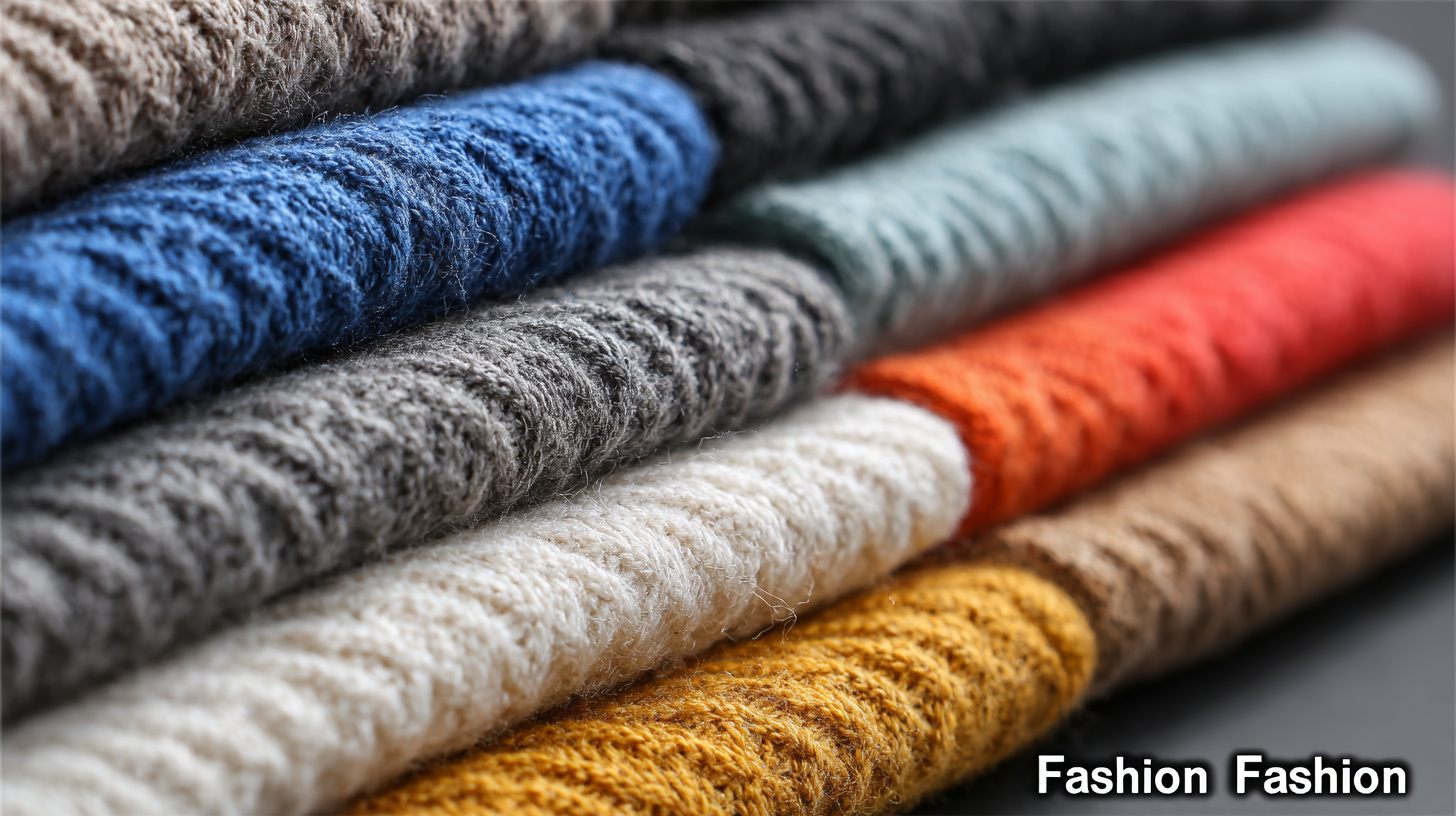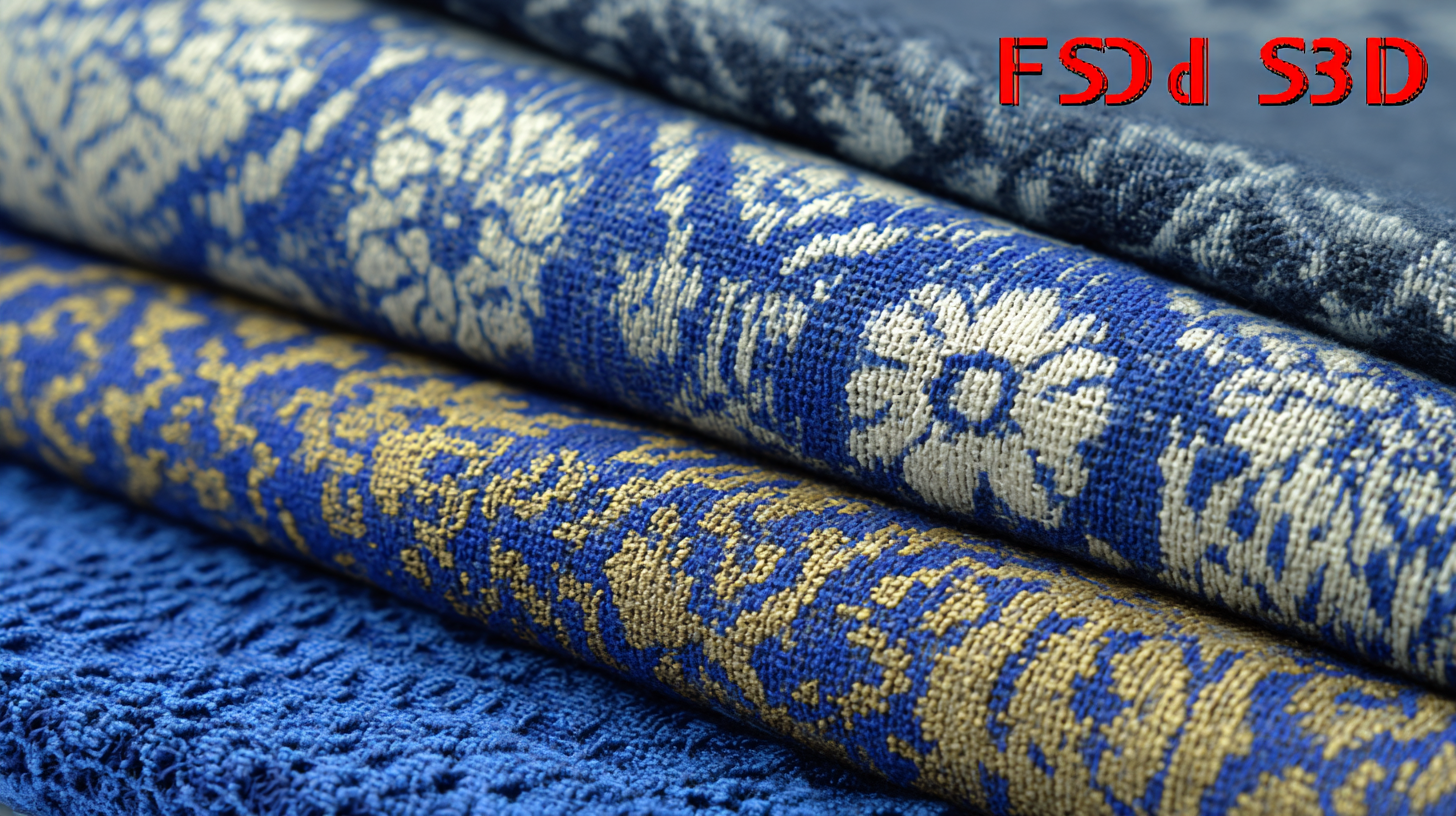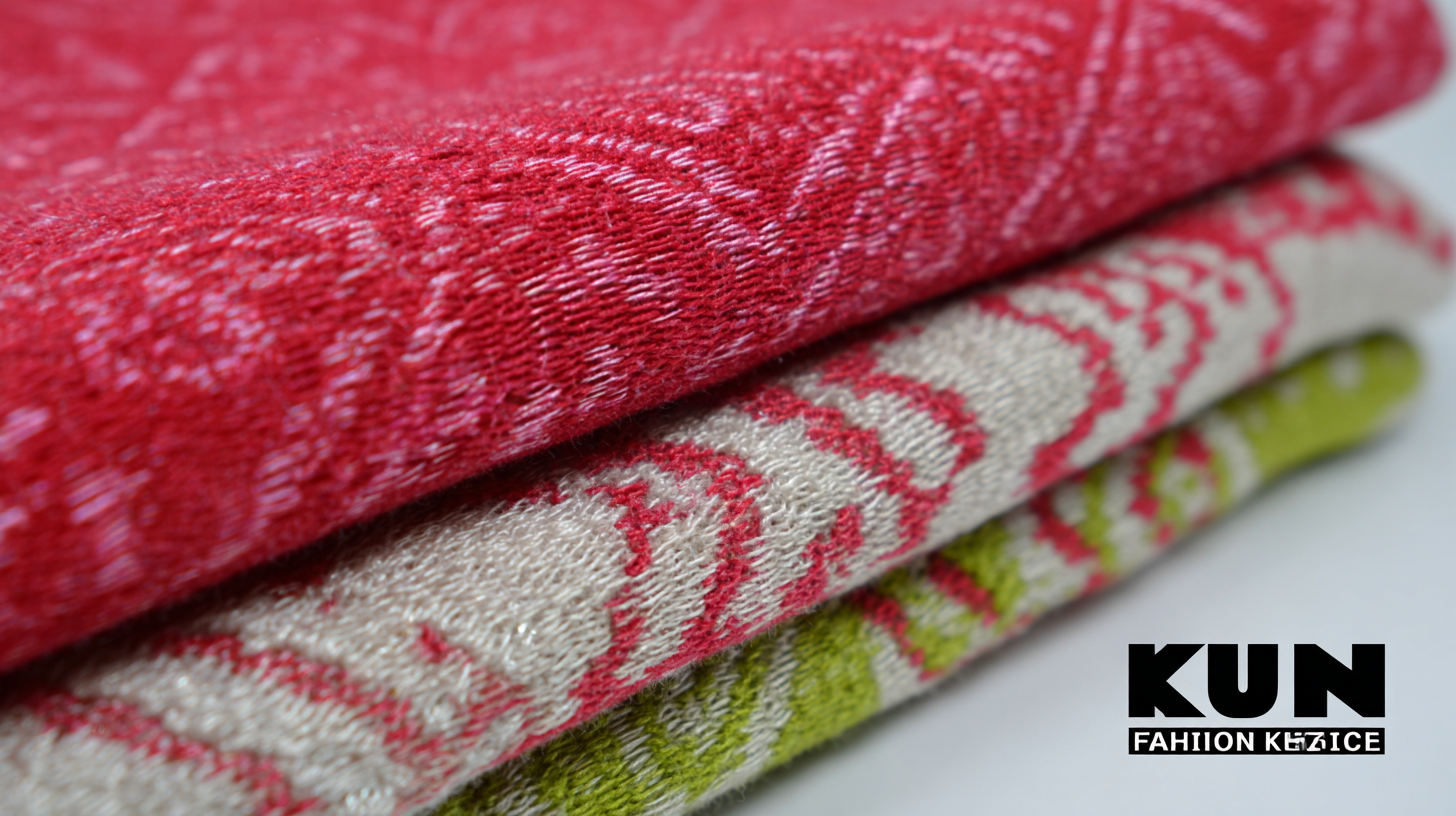In the dynamic world of textile manufacturing, the selection of quality manufacturers for Fashion Knitted Jacquard Fabric is crucial to ensure excellence in both production and design. According to a report by Technavio, the global textile industry is projected to grow by USD 88.95 billion from 2020 to 2025, driven by advancements in technology and sustainable practices.

When selecting quality manufacturers for knitted jacquard fabric, understanding the technical specifications is paramount. Knitted jacquard fabric is known for its intricate patterns and textures, which are achieved through complex knitting techniques. To ensure you are sourcing the best materials, it’s essential to consider the type of yarn used, the gauge of the fabric, and the density of the knit. Higher quality yarns, such as cotton or silk blends, provide better durability and softness, enhancing the overall feel of the fabric.

Tips for assessing quality include checking the fabric's stretch and recovery capabilities. A good knitted jacquard should retain its shape after stretching, indicating excellent elasticity. Additionally, examine the fabric's weight; heavier fabrics typically offer a more luxurious feel and greater durability. Lastly, look out for consistent colors and patterns throughout the fabric, as this reflects the manufacturer's attention to detail and quality control.
Another crucial aspect is the manufacturing process itself. Engage with manufacturers who prioritize sustainable practices and have transparent sourcing of raw materials. This not only positively impacts the environment but also ensures that the final product is free from harmful chemicals, which is vital for your brand's integrity and consumer trust.
When selecting fashion fabric manufacturers, particularly for high-quality knitted jacquard fabrics, there are several key factors to consider. First and foremost, the manufacturer's expertise and experience in producing jacquard fabrics are crucial. Look for companies that specialize in this type of knitting technology, as they will have a deeper understanding of the intricacies involved in creating intricate patterns and durable fabrics. A manufacturer with a strong portfolio and numerous successful collaborations within the fashion industry can be a reliable indicator of quality.
Another important factor is the availability of sustainable practices in the manufacturing process. As the fashion industry moves towards more eco-friendly solutions, it's essential to partner with manufacturers who prioritize sustainability. This includes the use of sustainable materials, responsible sourcing, and environmentally conscious production techniques. Additionally, assessing their quality control measures ensures that every batch of fabric meets the required standards, thus minimizing waste and promoting ethical production practices. By focusing on these aspects, designers can make an informed choice that aligns with both quality and sustainability in their fabric selections.
When selecting a quality manufacturer for fashion knitted jacquard fabric, evaluating their capabilities in quality control and innovation is paramount. Quality control begins with the manufacturing process itself. A reputable manufacturer should have stringent quality assurance protocols in place, including regular inspections, standardized testing of materials, and certified compliance with industry standards. By visiting the factory or requesting documentation, brands can ensure that they partner with manufacturers who uphold high production standards and can consistently deliver superior products.
Innovation is another critical component to consider. The fashion industry is ever-evolving, and staying ahead requires a manufacturer that invests in research and development. Look for companies that embrace new technologies, such as computer-aided design and automated knitting machines, to push the boundaries of jacquard fabric creation. Furthermore, a commitment to sustainability through innovative practices can set a manufacturer apart. Brands that prioritize eco-friendly processes not only meet consumer demand for responsible fashion but also position themselves as forward-thinking in a competitive market. Careful assessment of these factors will lead to a fruitful partnership that enhances product offerings.
| Manufacturer Location | Production Capacity (units/month) | Quality Certifications | Innovation Rating (1-5) | Lead Time (weeks) |
|---|---|---|---|---|
| China | 500,000 | ISO 9001, OEKO-TEX | 4 | 6 |
| Turkey | 300,000 | BSCI, GOTS | 5 | 8 |
| India | 200,000 | ISO 14001, GOTS | 3 | 10 |
| Vietnam | 400,000 | SA8000, OEKO-TEX | 4 | 7 |
| Bangladesh | 600,000 | WRAP, ISO 9001 | 5 | 5 |
When assessing fabric samples for knitted jacquard fabrics, it's essential to focus on several key attributes that can determine the overall quality and suitability for your fashion needs. Begin by evaluating the visual texture, which greatly influences the aesthetic appeal of the garment. Recent studies on fabric preferences have identified specific adjectives that describe texture—smooth, soft, and rich are just a few descriptors that can guide your selection process. Designers should remember that the texture not only plays a role in the fabric's visual quality but also affects its wearability and comfort.

Next, pay close attention to the shrinkage properties of the fabric. Understanding how a fabric behaves after washing is crucial, especially for knitted materials. The relationship between yarn count and stitch length can significantly influence the final product's durability and fit. Fabrics constructed with 1 × 1 ribs, for example, offer unique benefits in terms of elasticity and recovery, which are vital for maintaining shape over time. By carefully assessing these aspects, you can ensure that the knitted jacquard fabric you choose meets both aesthetic and functional requirements, setting a standard of excellence for your fashion projects.
Building strong relationships with fabric suppliers is crucial for achieving long-term success in the fashion industry, especially when it comes to sourcing high-quality knitted jacquard fabrics. Establishing trust and open lines of communication can lead to more favorable terms, exclusive access to innovative materials, and a better understanding of the production process. This collaborative approach enables designers to align their creative visions with the practical capabilities of their suppliers, resulting in better-quality products.
Regular interactions and feedback sessions help in refining the relationship further. By showing genuine interest in their practices and challenges, fashion brands can foster a spirit of partnership that encourages suppliers to prioritize their needs. Additionally, offering insights into market trends and customer preferences can enable fabric manufacturers to provide tailored solutions that enhance the overall design process. Over time, these partnerships can evolve into alliances that support business growth and innovation, ensuring that both parties thrive in a competitive marketplace.